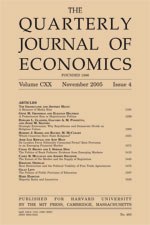
Fredriksson, P., Öckert, B. and Oosterbeek, H. (2013). Long-term effects of class size Quarterly Journal of Economics, 128(1):249--285.
-
Affiliated author
-
Publication year2013
-
JournalQuarterly Journal of Economics
This article evaluates the long-term effects of class size in primary school. We use rich data from Sweden and exploit variation in class size created by a maximum class size rule. Smaller classes in the last three years of primary school (age 10 to 13) are beneficial for cognitive and noncognitive ability at age 13, and improve achievement at age 16. Most important, we find that smaller classes have positive effects on completed education, wages, and earnings at age 27 to 42. The estimated wage effect is large enough to pass a cost-benefit test.